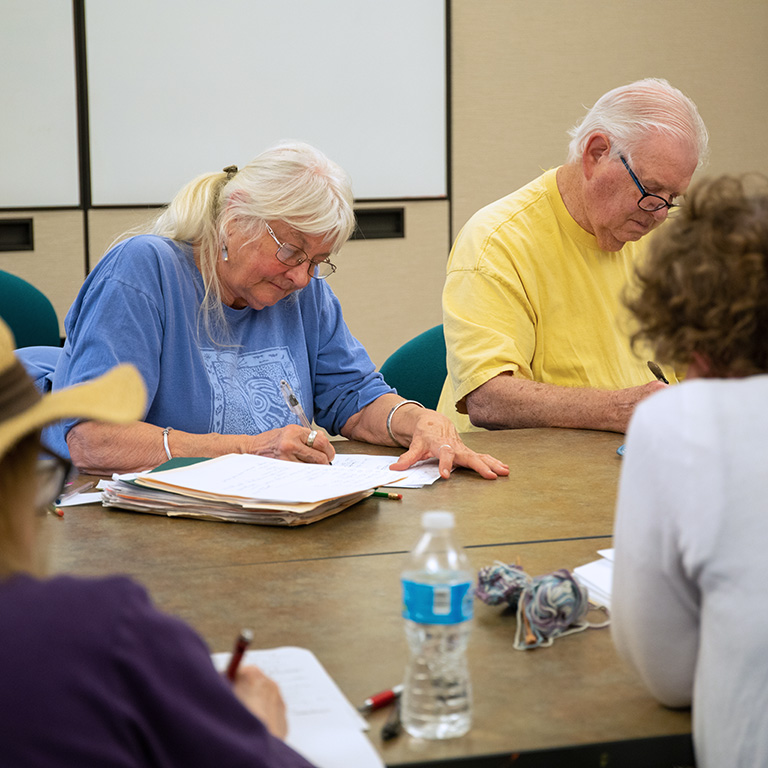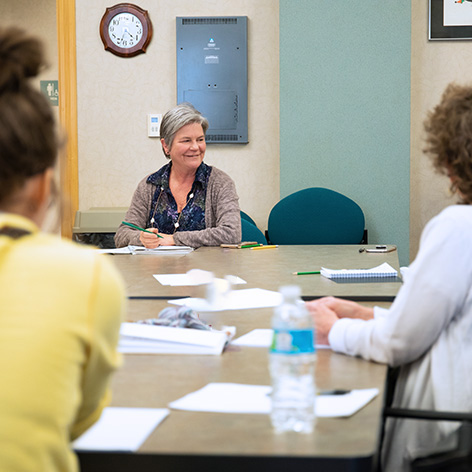In spring 2019, Catherine Bowman spoke about the music of writing at the Brown County Public Library. Bowman is a Ruth Lilly Professor of Poetry in Indiana University Bloomington’s creative writing program.
Bowman sat with 10 attendees in a circle, around tables that had been pushed together for the workshop. The workshop was part of Center for Rural Engagement’s Rural Arts Series. Participants spanned all ages. They wore T-shirts, caps, a denim vest. Two dogs—one in a training outfit—walked beneath the table. Occasionally, one barked.
Bowman started with a writing exercise. “Start writing names of everyone you’ve ever met, and just see what name follows what name,” she said. “Don’t think about it.”
The participants leaned over their sheets and pads. A woman in a sun hat walked in late. “Sorry,” she said. “I had a bird in my house.” A calm Bowman asked her what kind of bird it was. “I’m not sure,” the woman said. “I was stressed, and it was stressed.” She set her bag on the floor, pulled her pen and paper out, and squeezed in to sit at the corner of the table. Around the room, acquaintances greeted her with waves and nods.
When the writing portion of the exercise concluded, Bowman asked each participant to read his or her list aloud. She asked the others to listen without judgment. Each list elicited thoughtful responses from the group. Participants commented on one another’s repeated names, on titles paired with names, on the inclusion of last names. Bowman encouraged everyone to listen to the beauty of the sounds as speakers moved from one name to the next.



